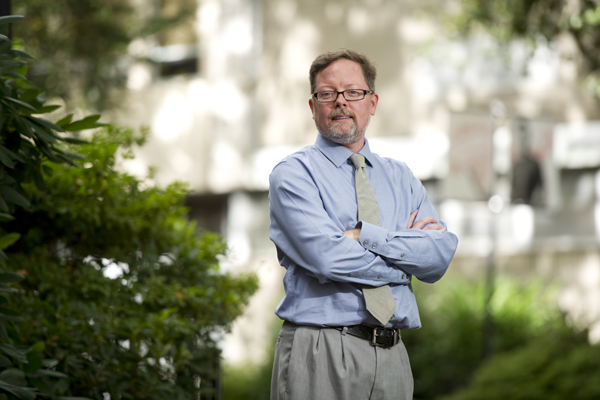Professor to lead U.S. biomaterials research society

Thomas Webster, professor and chair of Northeastern’s Department of Chemical Engineering, has been named president of the U.S. Society for Biomaterials. The 3,000-plus-member organization is the nation’s leading multidisciplinary society of academic, healthcare, government, and business professionals dedicated to promoting advancements in all aspects of biomaterials science, education, and professional standards to enhance human health and quality of life.
Webster brings a wealth of research and expertise to this leadership role. His work involves developing biologically compatible nanoparticles that can be applied to materials that come into contact with human tissue. His biomaterials can be used not only in place of traditional medical devices such as titanium hip implants or polymer-based vascular stents, they’re also applicable to more innovative approaches such as tissue engineering using stem cells, as well as implantable and wearable sensors.
Webster noted that researchers in similar societies across the globe are pursuing important and innovative work, and meetings between members in different countries often reveal fertile ground for collaborative research. International collaborations, he said, are critical to advancing this work and translating that research to industry at both the national and global level. The problem is these societies lack a uniform voice to advocate for their governments to invest in such research partnerships.
In response, his first priority since becoming president in April was to establish a funding platform that promotes translational research collaborations between the U.S. and China. The goal would be for the biomaterials societies in each country to secure funding from their respective governments, which they would then use to offer grants to collaborative teams comprising Chinese and American researchers and industry partners. Under Webster’s plan, each proposal would feature one researcher and one industry partner from each country involved.
The medical device field is one specific area of research where the U.S. and China stand to benefit from collaboration. “We’re each suffering the same problems,” Webster said. “We have huge numbers of people who are set to retire—they need hip implants, knee implants, pacemakers. The same is true in China.”
One difference, he said, is the way the two healthcare systems work and greater income disparities within the two nations. Successfully navigating the unique priorities of the different countries in a collaboration could have benefits for both.
If the model works, he hopes to take it to other nations such as India and Brazil, where biomaterials research and development are equally promising.
As president, Webster also hopes to increase representation of clinical personnel in the society’s membership, which he said would help the field identify the patient population’s most critical needs.





